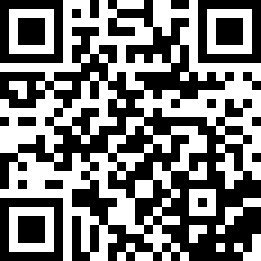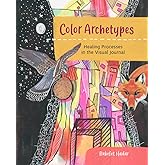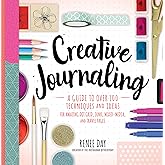
Download the free Kindle app and start reading Kindle books instantly on your smartphone, tablet or computer – no Kindle device required.
Read instantly on your browser with Kindle for Web.
Using your mobile phone camera - scan the code below and download the Kindle app.

Follow the authors
OK
Visual Journaling: Going Deeper than Words Paperback – 1 Oct. 1999
- Print length192 pages
- LanguageEnglish
- PublisherQuest Books
- Publication date1 Oct. 1999
- Dimensions21.59 x 1.02 x 27.94 cm
- ISBN-100835607771
- ISBN-13978-0835607773
Customers who viewed this item also viewed
Product details
- Publisher : Quest Books (1 Oct. 1999)
- Language : English
- Paperback : 192 pages
- ISBN-10 : 0835607771
- ISBN-13 : 978-0835607773
- Dimensions : 21.59 x 1.02 x 27.94 cm
- Best Sellers Rank: 961,255 in Books (See Top 100 in Books)
- 3,718 in Art Relaxation & Therapy
- 4,275 in Mental & Spiritual Healing
- 28,312 in Practical & Motivational Self Help
- Customer reviews:
About the authors

Barbara Ganim is an accomplished author, holistic health counselor, and teacher of expressive and creative art for transformational healing. She continues to teach in the Expressive Arts Institute at Salve Regina University, since retiring in 2011 from the positions of Assistant Professor and Senior Lecturer in the Holistic Counseling Graduate Program after 18 years. Barbara was also on the clinical staff at the Hope Center for Cancer Support and Talbot House Treatment Centers for substance abuse, both in Providence, Rhode Island. Along with Art and Healing, she is the author to the following books – Visual Journaling: Going Deeper than Words, Drawing from the Heart: A Seven Week Program to Heal Emotional Pain and Loss, and The Healing Power of Art.
Barbara was honored in 2013 with the Distinguished Alumna Award from the State University of New York, College at Oneonta where she received her undergraduate degree in fine arts and art history. Today, she lives in North Kingstown, Rhode Island where she paints mystical landscapes, writes children’s ghost mysteries, and plays guitar and sings with the Joyful Noise Angels.

I am an author, artist and core member of the facility in the Expressive and Creative Arts Program at Salve Regina University, Newport RI. In addition, using unique art-making processes, imagery and nature based experiences I do private coaching and mentoring that support life goals, special projects and personal transformation. Working with both groups and individuals, I support positive life change that fuel a passion for balance and wholeness as well as guide transformational processes to uncover one's personal Creative Spirit.
My work is designed to uncover blocks, draw out our personal story, support our playful self and liberate the creative force within. Creating has always offered the power to awaken, uplift and transform the creator. It offers the ability to go deeper, to give voice to more meaningful aspects of ourselves.
Working closely with your own creative nature can support heartfelt special projects, as well as individual transformational work.
I offer:
➤ Depth Coaching
➤ Professional Mentoring
➤ Exploratory Creation Groups
CREATIVITYFACTORINYOU.com
Bringing together creativity with the love of nature and art.
Customer reviews
Customer Reviews, including Product Star Ratings, help customers to learn more about the product and decide whether it is the right product for them.
To calculate the overall star rating and percentage breakdown by star, we don’t use a simple average. Instead, our system considers things like how recent a review is and if the reviewer bought the item on Amazon. It also analyses reviews to verify trustworthiness.
Learn more how customers reviews work on Amazon-
Top reviews
Top reviews from United Kingdom
There was a problem filtering reviews right now. Please try again later.
Top reviews from other countries
There is no need for the reader to understand what other journal-makers have drawn/painted and how that symbolizes what they were feeling. It is emphasized several times that no-one but the producer of the art can interpret what the symbol means. Each person's art is unique and different people will produce different symbols for different feelings and the body's feeling of different life situations. The reason for the exercises of getting you into your body, is that the body is where the symbols originate. You go inside your body to feel what is there, how your body is holding a life situation. After sitting with the body for a while with interested curiosity, you notice if there is a symbol that would express how/what you feel. It is also stated that this symbol may not be a picture - it may perhaps be a word, for example.
It should be pointed out that the title of the book is "Visual Journaling", so of course the emphasis is on visualizing, seeing in your mind's eye what your body is experiencing. Forgive me, but isn't drawn and painted art necessarily visual? And so sorry if your particular questions and needs weren't met - it's a book, so of course it's going to be general information! Go get private instruction if you need specific questions answered. Sheesh!








